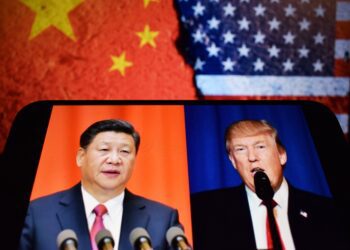It’s a common sentiment among millennials that the generation born between 1946 and 1964 has ruined the United States and is responsible for the high cost of housing, the national debt, climate change, and low interest rates that punish savers.
That last one may not actually be their fault, according to Princeton’s Atif Mian, Harvard’s Ludwig Straub, and Chicago Booth’s Amir Sufi. Rates that are stuck near zero tend to correlate with economic stagnation and price bubbles, while also limiting monetary policy makers’ ability to respond to downturns by lowering rates further, the researchers observe. But the likely culprit for the current situation is the dramatic increase in income inequality, Mian, Straub, and Sufi find.
Shifting demographics and related increases in savings—particularly among the massive postwar generation—are widely cited explanations for the decline in rates. The researchers put this to the test by examining data from the Federal Reserve’s Survey of Consumer Finances Plus (known as SCF+), spanning 1950 to 2019. They focused on two key factors: the variation in savings rates across demographic groups at different points in time and the subsequent shifts in income share within these groups.
According to the baby boomer theory, as this generation hit middle age, its members began to save more. Younger generations don’t save as much, the argument goes, and thus borrow more. The oldest workers do not save, instead consuming all of their wealth before dying. Thus, the borrowing rates of younger generations must match the savings of the middle-aged group. If the middle-aged population is larger than the younger generation, there will be an imbalance, and interest rates will have to fall to stabilize the lending borrowing market. Thus, rates decline when a large population with high savings rates—such as the boomers—passes through middle age. The pattern should be reversing as the boomers age, retire, and stop saving.
However, the researchers’ data tell a different story. Mian, Straub, and Sufi examined the income distribution and savings rates of high-, middle-, and low-income households within each cohort—aged 18 to 34, 35 to 44, 45 to 54, 55 to 64, and 65 to 74. They find that savings rates within the groups varied far more on the basis of income than the rates across generations.
Households in the top 10 percent by income within each segment saved at a rate 10 to 20 percentage points higher than the rate of the bottom 90 percent. While this pattern was present throughout the entire sample period, it became more significant over time, particularly between 1983 and 2019. The researchers find that the top 10 percent within each birth cohort over that period of time had an income share nearly 15 percentage points higher than the top 10 percent before 1980.
The researchers estimate that as more income flowed to the top 10 percent, that group saved 3–3.5 percentage points more of national income from 1995 to 2019 than before 1980. This represented 30–40 percent of total private saving in the US economy from 1995 to 2019.
Thus, they argue, the rise in savings by high-income households—rather than across demographic groups—is the dominant force behind plunging interest rates.
“The findings of this study fit into a broader agenda tying rising income inequality directly to important macroeconomic variables,” the researchers write. “Policy makers should recognize that rising income inequality is more than a distributional issue; it is likely a central force shaping broader macro-economic trends.”
Given that income inequality does not appear to be going anywhere, the research implies that low rates could stick around for a while.
Courtesy Chicago Booth review/By Rebecca Stropoli












